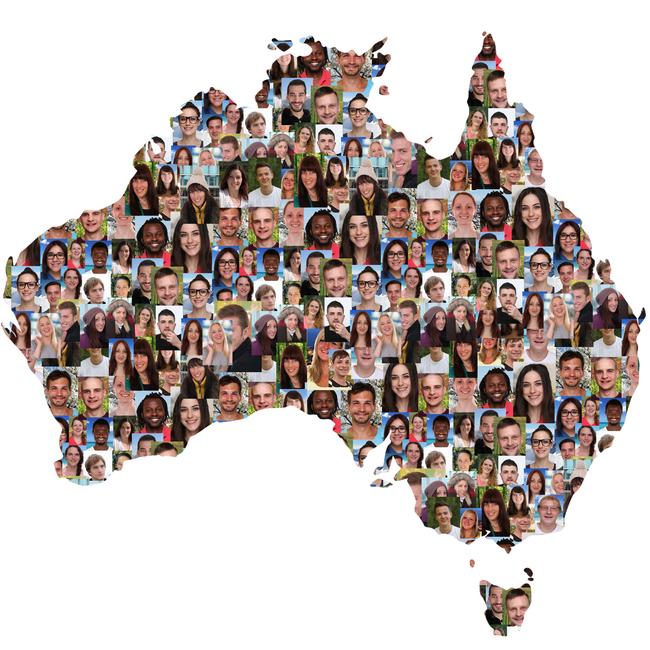Urgent call by business for boost in migration levels
Large employers push for huge increase in migration levels to counter skilled workforce crisis, Covid-19 hit to economic growth.

Australia’s largest employer groups are pushing for a huge increase in migration levels in next year’s budget to counter the skilled workforce crisis and Covid-19 hit to economic growth.
The private sector drive comes as new data reveals the government will rely heavily on net overseas migration to boost record low population growth.
Business leaders have called for the annual permanent migration cap to be increased from 160,000 to between 190,000 and 200,000 in response to labour market pressures and employers struggling to find skilled workers and lock in long-term investment.
The push to accelerate the return of skilled workers comes as Assistant Treasurer Michael Sukkar will on Monday release an updated population statement, revealing a slow return to pre-pandemic population levels and faster recovery in capital cities compared with regional Australia.
With population growth falling to its lowest levels in more than 100 years, Mr Sukkar said the retraction was linked to “restrictions on international borders and the impact on net overseas migration – typically the main source of Australia’s population growth”.
In a submission to the Home Affairs Department, Australian Industry Group chief executive Innes Willox said 190,000 places should be made available in the March 29 budget, with a “return to two-thirds of the program being composed of skilled migrants”.
The Migration Council Australia chair said “this would provide an important signal of government support for the skilled migration program”.
“Skilled migrants generate the greatest benefits to the Australian community since they contribute directly to our national employment and skills base,” Mr Willox said. “As at 30 June 2021, there were 1,688,700 temporary visa holders in Australia, compared with 2,000,212 on 30 June 2020, a reduction of 311,512 (15.6 per cent).

“While the target of 160,000 permanent migrants was met in 2020-21, only half were in the skilled stream, a significant reduction from the usual 70 per cent.”
Mr Willox urged the government to link annual growth in permanent migration to national labour market growth in the longer term, rather than having a fixed yearly quota.
Employer groups said the greatest threat to business growth and investment was the difficulty of finding and retaining skilled labour across key sectors, including engineering, construction, manufacturing and services.
New EY analysis, commissioned by the Business Council of Australia, said if international borders remained shut the “economic losses due to the collapse in migration could reach $807bn by 2028”. The research also tested the economic benefits of migration, revealing that for every 1000 migrants there would be $38m more tax revenue, $124m in higher economic output and $59m in increased investment.
After a two-week pause following the emergence of the Omicron variant, the Morrison government last Wednesday began welcoming back more than 200,000 visa holders, including economic migrants, international students and refugees. Travel bubbles are also in place with Singapore, Japan, Korea and New Zealand.
BCA chief executive Jennifer Westacott said securing the right workers with the right skills would “get key projects and investments off the ground”.
“You can’t employ hundreds of Australians on a construction job if you don’t have a surveyor and you can’t deliver an infrastructure pipeline without engineers,” she said. “Well managed population growth will be critical to support labour shortages and skills gaps in our immediate recovery and to helping offset the impact of an ageing workforce in the longer term.”
Australian Chamber of Commerce and Industry chief executive Andrew McKellar said the government should increase the target for permanent skilled migration intake to 200,000 for “at least the next two years”.

“Businesses of all sizes, across every sector, right around the country, are being hamstrung by the most severe skill shortage in 33 years. A solution is desperately needed,” Mr McKellar said.
Mr McKellar warned increasing the migration intake was “no panacea”, with governments needing to rebuild Australia’s domestic skills base. ACCI’s pre-budget submission urges the government to remove the Skilling Australians Fund levy for temporary and permanent employer nominated visas, which range between $1200-$3000 per year for small business and $1800-$5000 for large businesses.
With new variants and Covid-19 restrictions hindering the return of migrants, the Centre for Population expects growth will remain low at 0.3 per cent in 2021-22. As revealed in last week’s mid-year budget update, Australia’s population is expected to be 1.5 million smaller by the end of the decade compared with pre-Covid forecasts. Net overseas migration is forecast to fall from a net inflow of 193,000 in 2019-20 to net outflows of 100,000 in 2020-21 and 41,000 in 2021-22.
Centre for Population executive director Damien White said it had been “difficult to confidently analyse recent population trends and there is significant uncertainty around projections of future population”.
While the outlook remains uncertain, population growth is projected to increase to around 1.4 per cent by 2024-25 as “overseas migration recovers”.
Mr Sukkar said capital cities were forecast to return to “higher growth rates than rest-of-state areas from 2022-23 as restrictions are relaxed and overseas migration returns”. “Melbourne is projected to be the fastest growing capital city from 2023-24 onwards, overtaking Sydney to become the nation’s largest city in 2029-30 at just over 5.9 million people,” he said.
He said compared with other developed countries, Covid-19 had so far had “minimal impact on Australia’s birth and death rates”.
“All states – other than the Northern Territory – are forecast to experience a drop in population growth in 2020-21 compared to 2019-20. In 2020-21, population growth is forecast to decline to -0.1 per cent for capital cities combined and 0.5 per cent growth for the rest-of-state areas combined.”
Net overseas migration scenarios suggest that under an “upside” post-pandemic trajectory, Australia’s population would reach 29.5 million by 2031-32. Under a downside scenario, the national population would reach 29.1 million.
The statement said “skilled permanent migrants were down significantly compared with levels prior to pandemic”, which had offset internal migration flows from regional areas to capital cities.








To join the conversation, please log in. Don't have an account? Register
Join the conversation, you are commenting as Logout